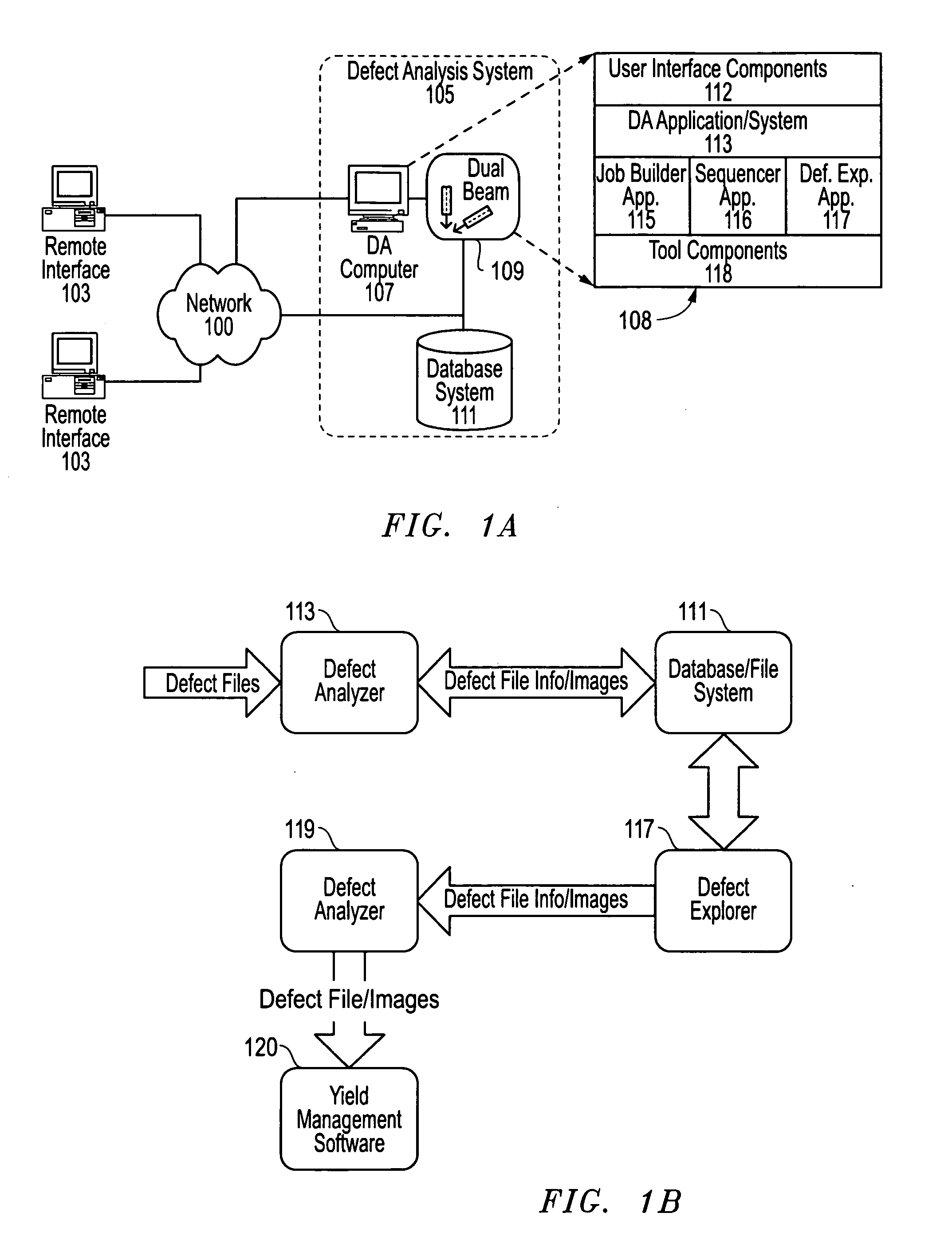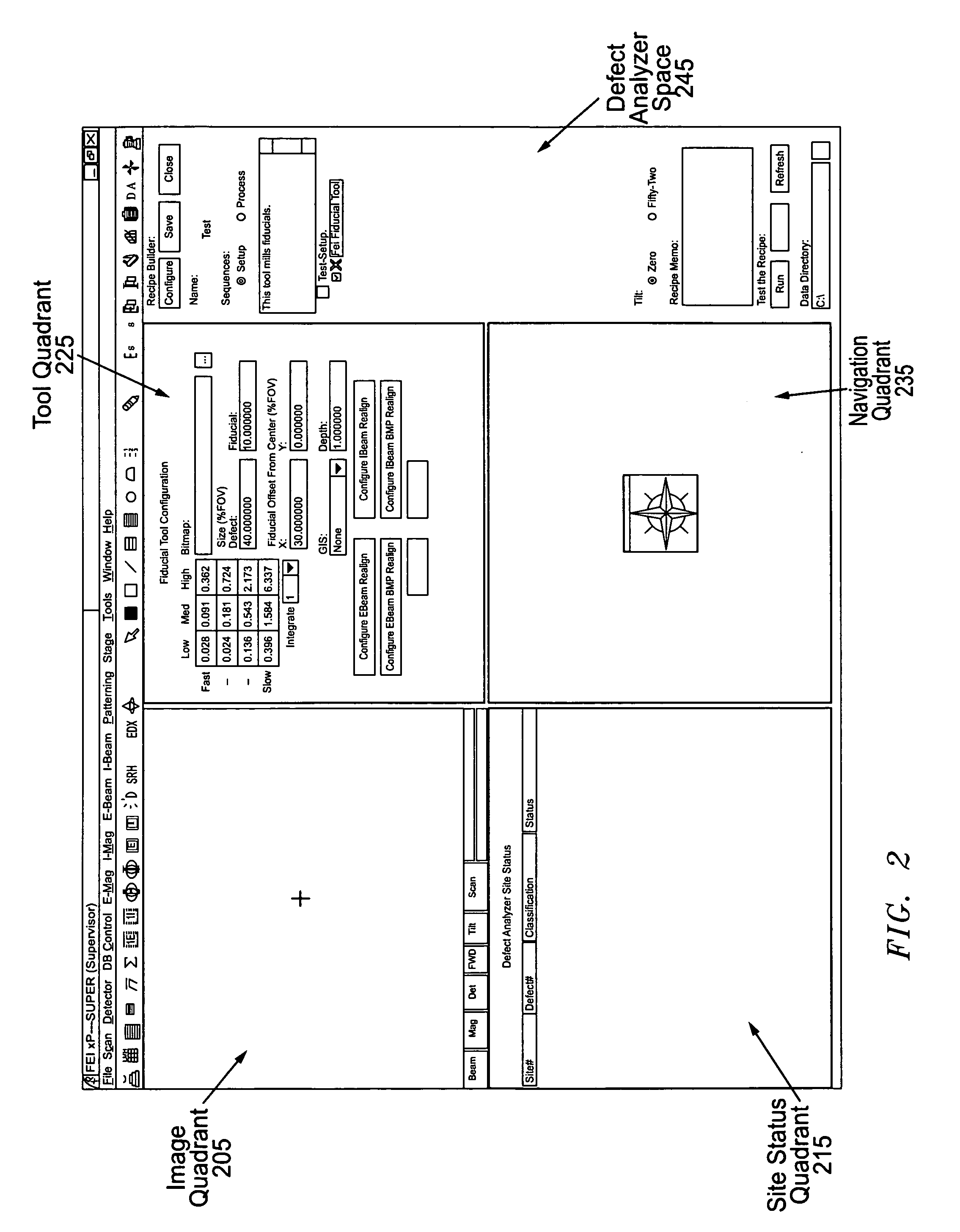Defect analyzer
a technology of defect analysis and analyzer, which is applied in the direction of instruments, nuclear elements, testing circuits, etc., can solve the problems of defect analysis often required, defects and structural causes of device failures are often hidden, and the structure complexity of today's semiconductors grows exponentially
- Summary
- Abstract
- Description
- Claims
- Application Information
AI Technical Summary
Benefits of technology
Problems solved by technology
Method used
Image
Examples
Embodiment Construction
A. Overview
[0066]The present invention provides partly or fully automatic location and characterization of microscopic defects in items, such as integrated circuits or other structures fabricated on semiconductor wafer. The automatic characterization of the defect may include steps such as forming an image of the top surface, milling one or more cross sections, forming an image of the one or more cross-sections, performing an x-ray spectroscopy analysis (e.g., energy dispersive spectroscopy, “EDS”) to determine the type of material present on the surface or in a cross section, and storing defect characterization data. By being partly or fully automated, the invention can provide rapid feedback to process engineers. Embodiments of the invention can change the defect analysis process from a labor intensive, time consuming process performed in a laboratory to a production process that provides timely feedback to process engineers for troubleshooting or improving production.
[0067]In one...
PUM
 Login to View More
Login to View More Abstract
Description
Claims
Application Information
 Login to View More
Login to View More - R&D
- Intellectual Property
- Life Sciences
- Materials
- Tech Scout
- Unparalleled Data Quality
- Higher Quality Content
- 60% Fewer Hallucinations
Browse by: Latest US Patents, China's latest patents, Technical Efficacy Thesaurus, Application Domain, Technology Topic, Popular Technical Reports.
© 2025 PatSnap. All rights reserved.Legal|Privacy policy|Modern Slavery Act Transparency Statement|Sitemap|About US| Contact US: help@patsnap.com



